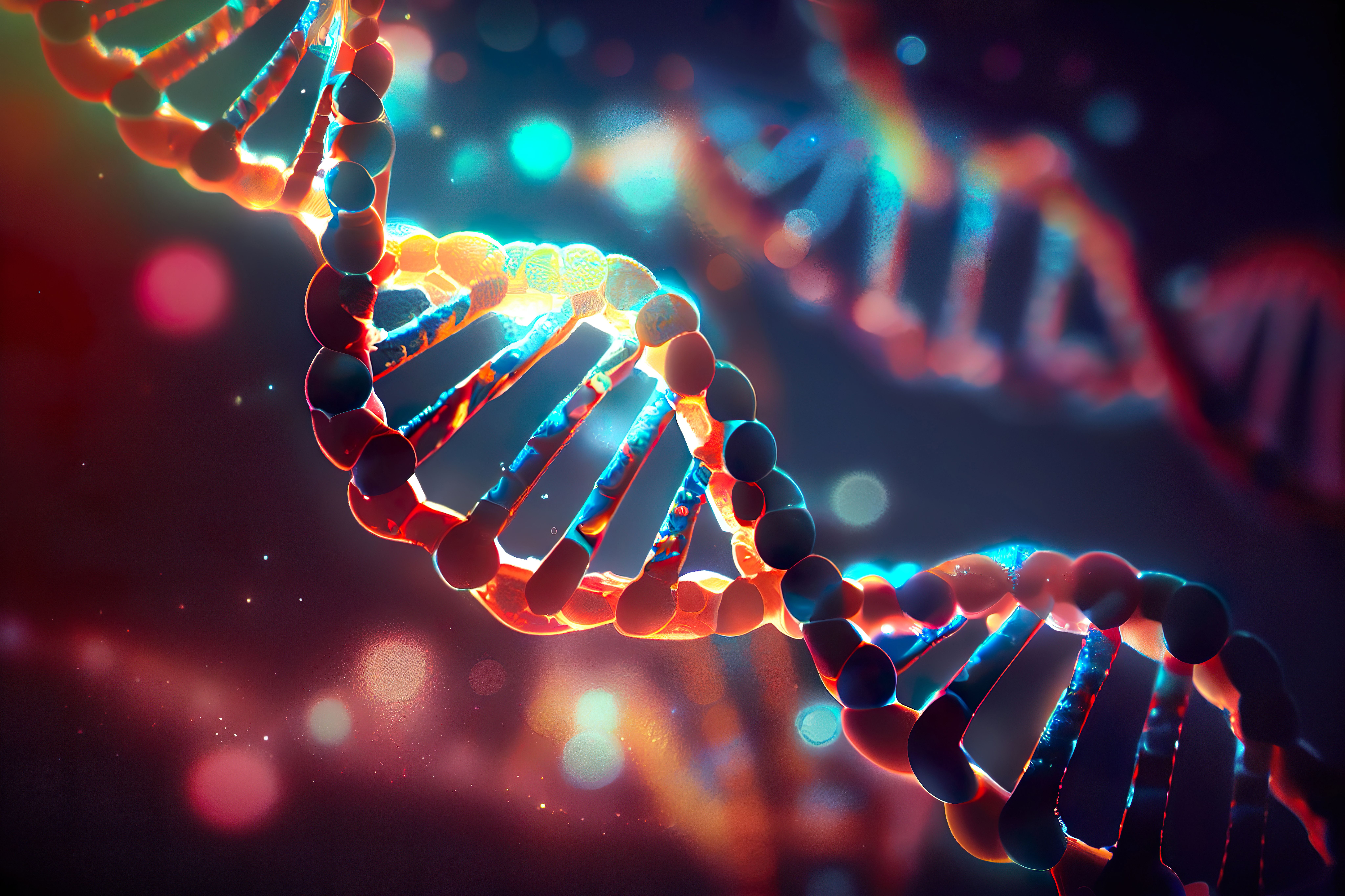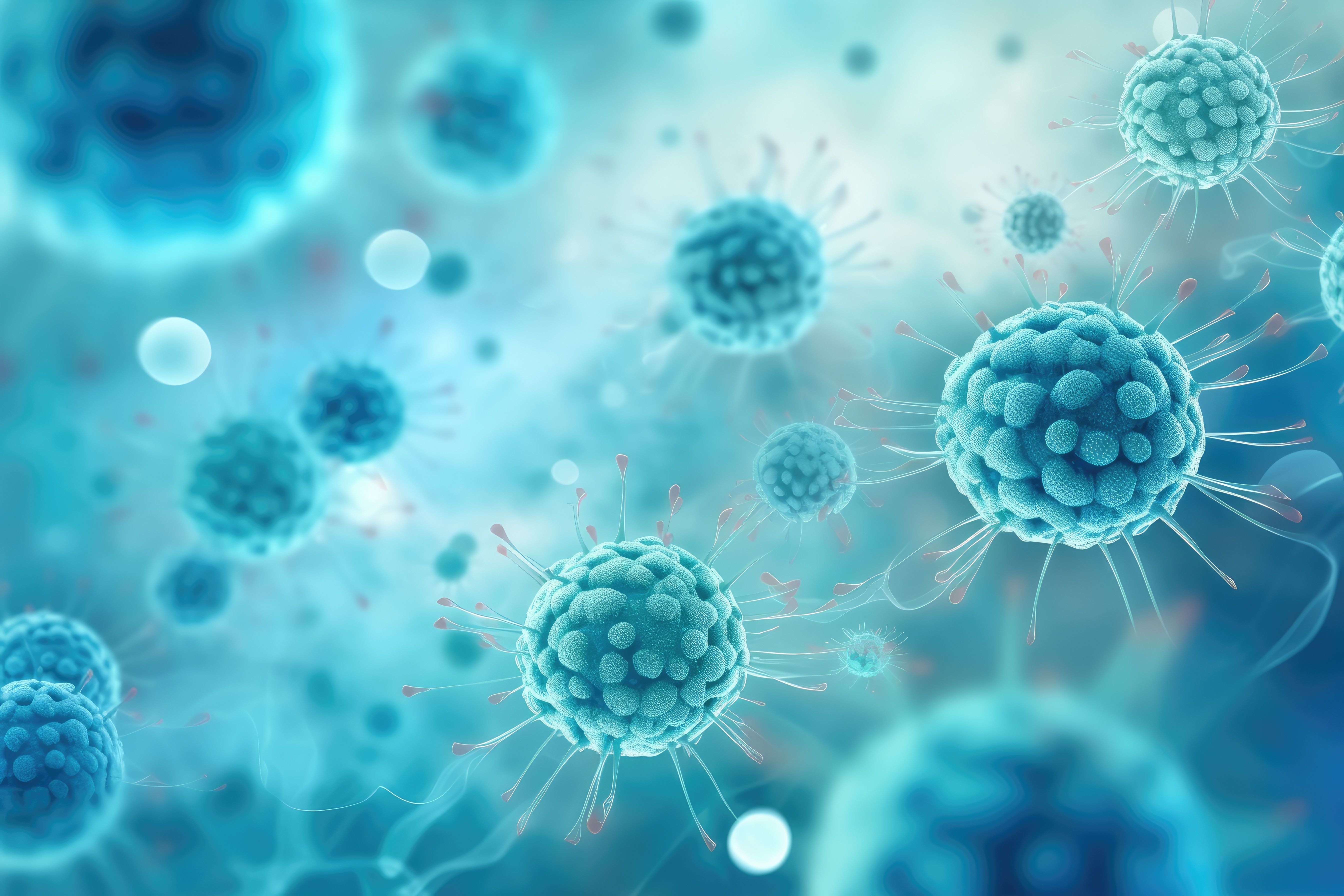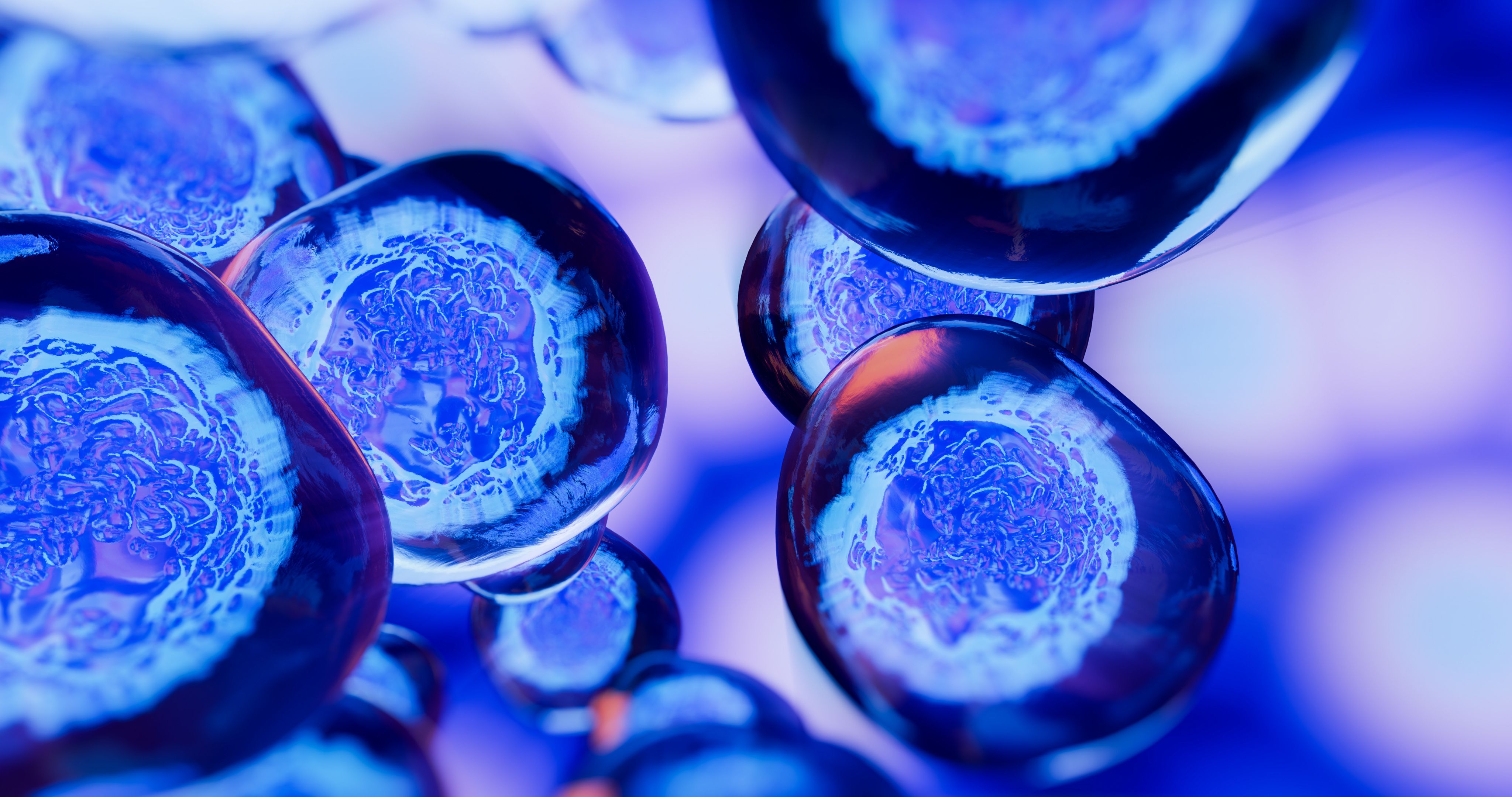Is AI the Future of Oncology?
AI is seemingly everywhere, and while its applications in cancer care have increased, it still faces challenges.
DNA helix enlarged model in bright colors and spots, Generative AI: © Radomir Jovanovic - stock.adobe.com

Artificial intelligence (AI) and machine learning (ML) are growing in sophistication and prolificacy in both everyday life and the oncology sphere. From improving diagnoses and predicting outcomes, they hold great promise across many cancer types.
“That's the beauty of AI and why it can see things that other human brains cannot. That is top-down. Biotechnology is more bottom-up. It is using the knowledge that you have…creating a hypothesis, testing the hypothesis, and moving up from that. What’s exciting is during this top-down and bottom-up, exciting things can happen,” said Mark Dybul, MD, said in an interview with Targeted OncologyTM.
Despite this, many challenges remain with developing AI technology for medical use as well as ethically incorporating it into practice.
Current Applications of AI in Oncology
The applications of AI in the diagnosis and treatment of cancer are emerging rapidly. The FDA has reported that most models have trended toward hybrid approaches, using multiple algorithms to run safe and effective tests. Between August 2022 and October 2023, the FDA approved 171 AI/ML-enabled medical devices, with a majority in radiology and imaging.1
ML algorithms can help clinicians analyze images to better identify or understand potential areas of concern while cutting down on time. AI algorithms are also being trained to predict patient outcomes based on histopathology images.
In January 2024, the FDA approved DermaSensor, the first AI-powered diagnostic tool for skin cancer. The device provides a noninvasive way to diagnose all 224 types of skin cancer at the point of care. DermaSensor uses spectroscopy to analyze a lesion at cellular and subcellular levels and has a 96% sensitivity.2
The device is intended for use in primary care provider offices and is shown to decrease the number of missed skin cancers by half (18% vs 9%). It also is leading clinicians to refer more patients for skin cancer treatment (81% vs 94%). The DermaSensor’s approval signifies the start of what could be many more approvals of AI/ML algorithms and devices in different cancer types.
AI is also being applied in the realm of hematologic malignancies, which can present roadblocks when evaluating lab results and formulating a diagnosis.
“These diagnoses are challenging to differentiate because including clinical and laboratory abnormalities, mutational profiling, and assessment of their bone marrow, which can be very subjective, particularly when looking at the megakaryocyte morphologies and the fibrosis,” said Andrew Srisuwananukorn, MD, assistant professor at The Ohio State University Comprehensive Cancer Center, in an interview with Targeted OncologyTM.
One of the strengths of AI algorithms is that theoretically, once perfected, they can be applied agnostically.
“Once we lock down the algorithm, that is, we have used it and locked it down, then it becomes a routine algorithm for cancer care,” said Anil Parwani, MD, PhD, MBA, professor of pathology at The Ohio State University, in an interview with Targeted OncologyTM.
“These algorithms are agnostic of disease and outcome. Potentially the same types of algorithms or workflows can be used for any type of disease that other clinicians might be able to implement in their clinical practice,” Srisuwananukorn said.
“AI can be a gatekeeper. It can screen those cases one more time and make sure everything I wrote in my report is accurate,” said Parwani. “If I can even save 15% to 20% of time, per biopsy, I can put that time back into patient care, I can read the reports more carefully, I can spend more time reviewing the patient's chart, so I am not overwhelmed, I am not burnt out, I enjoy what I do.”
Evolving Paradigms of AI in Oncology
One major benefit AI can deliver is an ability to intake and process large amounts of data.
Tumor microenvironment background with cancer cells, T-Cells, nanoparticles, molecules, and blood vessels. Oncology research concept: © ratatosk - stock.adobe.com

“The way AI works is it just takes massive datasets and agnostically has trained algorithms to look for things, but it doesn't have a predetermined hypothesis on what those will be,” said Mark Dybul, MD, said in an interview with Targeted OncologyTM. “That's the beauty of AI and why it can see things that other human brains cannot. That is top-down. Biotechnology is more bottom-up. It is using the knowledge that you have…creating a hypothesis, testing the hypothesis, and moving up from that. What’s exciting is during this top-down and bottom-up, exciting things can happen.”
A forefront in applying AI in cancer care is what Dybul, chief executive officer of Renovaro Biosciences, professor in the Department of Medicine at Georgetown University, and senior advisor at the Center for Global Health Practice and Impact, calls a multiomic approach: taking in information beyond standard genomic testing, including proteomic, transgenomic, and probiotic data.
“The advantage of multiomics is if you just use genes, you get a lot of noise. Genes exist to produce something—proteins—and so what proteins are produced, how do they fold, how do transgenes interact? As you go through the different layers, you begin to filter out the noise and focus on what is real,” Dybul said.
Dybul identified 3 key areas where AI can play a transformative role in cancer care, starting with individualized treatment response prediction.
“With imaging, it generally takes 6 to 12 months to detect whether or not someone is responding well to therapy take PD-1 inhibitors…but they fail about 60% of the time. It would be very useful to know or to predict who is likely to respond to that PD-1 inhibitor and who is not. One [reason is] for the patient so they are not on a treatment as their cancer is growing that you can't pick up for 6 to 12 months. But secondly, [PD-1 inhibitors] cost about $50,000, so the cost to the health system…to use a drug that ultimately is going to require other therapy and more advanced therapy that might not work because the cancers been growing for 6 to 12 months while the imaging isn't able to pick it up,” Dybul said.
Early identification of disease relapse is another area that Dybul highlighted where AI could be impactful.
“If you diagnose or pick up recurrence earlier, you are more likely to have a successful outcome than if you do not..If you can predict the likelihood of therapy, that is a great thing for the patient [and their] family. It is also a good thing for the health system [and] for the clinicians,” Dybul said.
Dybul also was encouraged by the idea of using AI to aid in new drug development and clinical trial design.
“If you are predicting patients’ failure, you should start to pick up things that are common in the people who fail, which could lead to new drug discovery. As we are conducting our clinical trials, we can look across our patients to strengthen their algorithms, but also to see if there are common things,” Dybul continued.
AI’s diagnostic and prognostic powers can also help patients in a material way by saving money. Traditional molecular assays take time to process and could cost thousands of dollars, which may or may not be covered by a patient’s insurance.3
Assays being developed for AI could be run the same day, eliminating the costs of sending a sample to a lab and allowing for a patient’s treatment to begin faster.
“Imagine a world where you could go to a clinician’s office [and] get a blood test. Right now, it would take 72 hours or longer, a week, to get your tissue results. But with blood, we might be able to get to a point where you could get it that day or in the doctor's office,” Dybul said. “When we advance, we hope to reach the potential point of being able to predict therapeutic response. While you are at your doctor's, you get diagnosed, you have prediction of your therapeutic response, and then you have the treatment available. That is the world we envision by combining AI with [health care and] biotech.”
Challenges and Opportunities for AI in Oncology
While AI is an effective complement to physician expertise, many oncologists believe it should not be used as a standalone.
“I do not believe that algorithms can supplant physician judgment. But I do think that they will be used in clinical practice and it is up to us to know when it is not working. I hope that it is a support tool and will help guide your decision management,” Srisuwananukorn said.
Creative image of embryonic stem cells, cellular therapy: © pinkeyes - stock.adobe.com

Data and training are at the heart of engineering AI and ML programs. To generate accurate predictions, an AI program needs to learn from a large volume of high-quality data, which may not be available, especially in understudied cancers. An AI program also needs to be trained effectively, using a patient cohort that is representative of the risk population.
“We develop these models, we spend a lot of effort trying to make sure that these models are robust, and they are trying to mitigate these correlations to make sure that they're actually generalizable across different hospitals [and] different conditions,” said James Zou, PhD, assistant professor of biomedical data science at Stanford University, in an interview with Targeted OncologyTM.
Zou highlighted an active community of pathologists on X (formerly known as Twitter) where challenging histology or pathology images are posted so colleagues can discuss them. Using more than 200,000 of these images, an AI algorithm was generated to assist clinicians and students with referencing a range of conditions, including melanoma and breast cancer.4
Despite its challenges, AI holds promise as a complement to better diagnosing and treating patients with cancer.
“When I went to medical school, I did not even know this would be a possibility in the future. But today, I am very excited, and I am pleased that we have these tools now for patient care and for oncology care,” Parwani said.